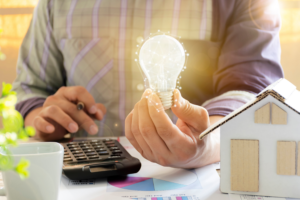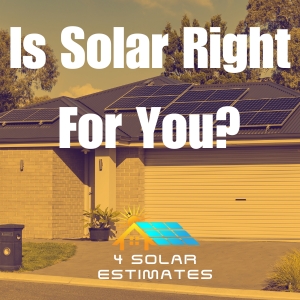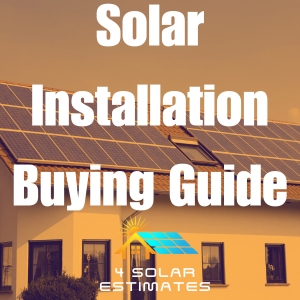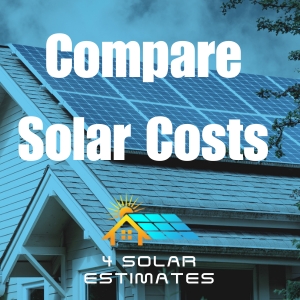
Solar or No Solar? A Comprehensive Checklist to Help You Decide
As energy costs rise and concerns about the environment become more pressing, many homeowners are considering installing solar panels to generate clean, renewable energy for their homes. While solar energy offers a range of benefits, including reducing electricity bills and decreasing your carbon footprint, it is also a significant financial investment. Deciding whether solar panels are right for you requires a thorough evaluation of your home, budget, energy needs, and long-term goals.
This comprehensive checklist will help guide you through the critical factors to consider before making the decision to invest in solar panels. By the end, you’ll have a clearer understanding of whether solar power is the right choice for your home.
1. Assess Your Home’s Solar Potential
The first and most important factor in deciding whether solar panels are right for your home is determining whether your property is suitable for solar energy generation. Solar panels work best when they receive direct sunlight for most of the day, and certain factors, such as shading and roof orientation, can affect how much energy they can produce.
Roof Condition and Orientation
- Roof Age and Condition: Is your roof in good condition? Solar panels typically last 20 to 30 years, so it’s essential that your roof be able to support the panels for the long term. If your roof is nearing the end of its lifespan or needs major repairs, it’s best to address those issues before installing solar panels.
- Roof Orientation: Does your roof face the right direction? Solar panels generate the most energy when installed on south-facing roofs in the Northern Hemisphere, as this orientation captures the most sunlight throughout the day. East- and west-facing roofs can also work, but they may be slightly less efficient.
- Roof Size: How much space is available for solar panels? Larger roofs provide more space for panels, which means higher energy production and greater savings. A small roof might limit the number of panels you can install, reducing the potential benefits.
Shading and Sunlight Exposure
- Shading: Are there trees, buildings, or other obstructions that cast shade on your roof? Solar panels need direct sunlight to function optimally. Shading can significantly reduce the amount of energy your system produces. You may need to trim trees or find ways to reduce shading if it affects a large portion of your roof.
- Sunlight Hours: How many hours of direct sunlight does your roof receive each day? Regions with more sunny days are ideal for solar panel installations. If your area is frequently overcast, it may take longer to see a return on your investment.
Tip: Use online solar calculators or consult a solar provider for a detailed assessment of your home’s solar potential. These tools can help estimate the amount of electricity your roof can generate based on your location, roof angle, and shading.

2. Review Your Energy Usage
Understanding your current energy consumption is essential to determine whether solar panels will meet your household’s energy needs and save you money in the long run.
Analyze Your Electric Bills
Start by reviewing your electric bills over the past 12 months to understand your average energy usage. Pay attention to both the total kilowatt-hours (kWh) consumed each month and the cost per kWh. Knowing your energy consumption patterns will help you size your solar system correctly.
- Average Energy Use: How much electricity do you use each month? A high energy demand makes solar panels more financially attractive, as you’ll likely see significant savings on your energy bills.
- Seasonal Variations: Are there seasonal fluctuations in your energy usage? Some households use more electricity during the summer or winter months due to air conditioning or heating. If your energy consumption varies significantly, you’ll want to ensure your solar system can handle your peak usage times.
Reducing Energy Use Before Solar Installation
Before committing to solar panels, consider taking steps to reduce your energy consumption. Energy efficiency improvements, such as upgrading to energy-efficient appliances, sealing windows and doors, or adding insulation, can lower your overall energy needs. This can reduce the size of the solar system you’ll need, potentially saving you money upfront.
3. Understand Your Financial Situation
While solar panels can save you money on your energy bills over time, they require a significant initial investment. It’s important to evaluate whether the financial benefits of solar energy align with your budget and long-term financial goals.
Upfront Costs vs. Long-Term Savings
- Initial Cost: The upfront cost of installing solar panels varies depending on the size of the system, the type of panels, and installation fees. On average, a residential solar panel system costs between $15,000 and $25,000 before incentives. Some homeowners may find the upfront investment challenging to cover without financing options.
- Incentives and Tax Credits: Federal, state, and local incentives can significantly reduce the cost of installing solar panels. The federal Investment Tax Credit (ITC), for example, allows homeowners to deduct 30% of the cost of their solar system from their federal taxes. Some states offer additional rebates, tax credits, or incentives to further lower costs.
- Financing Options: If paying the full cost upfront isn’t feasible, there are several financing options to consider. Solar loans allow you to spread the cost over several years, while solar leases and power purchase agreements (PPAs) let you pay for the system over time based on your energy usage. Each option has different financial implications, so it’s important to choose the one that best suits your situation.

Return on Investment (ROI)
The amount of money you save with solar panels depends on several factors, including the size of your system, the cost of electricity in your area, and available incentives. Most homeowners see a return on investment within 7 to 15 years, after which they continue to enjoy savings on their energy bills for the remaining lifespan of the system.
Key Financial Considerations:
- How long do you plan to stay in your home? If you plan to move within a few years, the long-term savings may not outweigh the upfront costs of installation. However, solar panels can increase your home’s value, potentially making it more attractive to buyers.
- How much are you paying for electricity? In areas with high electricity rates, the savings from solar can add up quickly. In regions with lower rates, the financial benefits may be less immediate.
4. Investigate Local Solar Incentives and Policies
Solar energy policies and incentives vary widely depending on where you live. These incentives can significantly reduce the cost of installing solar panels and make the investment more appealing.
Federal and State Tax Credits
As mentioned earlier, the federal Investment Tax Credit (ITC) allows homeowners to deduct 30% of the cost of their solar system from their federal taxes. This credit is available for systems installed before 2032, with a gradual phase-out expected after that year. Additionally, many states offer their own incentives, including tax credits, rebates, and sales tax exemptions.
Net Metering Policies
Net metering is a policy that allows homeowners with solar panels to sell excess electricity back to the grid in exchange for credits on their utility bill. These credits can be used to offset the cost of electricity when the solar panels aren’t producing enough power (e.g., at night or on cloudy days). The availability and specifics of net metering vary by state and utility provider, so it’s important to understand how it works in your area.
- Full Net Metering: You receive a 1:1 credit for the excess electricity you send to the grid, meaning you’re compensated at the same rate that you pay for electricity.
- Partial Net Metering: Some utilities offer partial credits, compensating homeowners at a lower rate for excess energy.
Local Regulations and HOA Rules
Some local governments and homeowners associations (HOAs) may have regulations governing the installation of solar panels. Check with your local municipality or HOA to ensure there are no restrictions on installing solar panels on your property.

5. Evaluate the Environmental Benefits
One of the primary reasons many homeowners choose solar panels is the positive environmental impact. Solar energy is a clean, renewable source of power that can significantly reduce your carbon footprint and dependence on fossil fuels.
Reducing Greenhouse Gas Emissions
By generating electricity from solar power, you can reduce your household’s greenhouse gas emissions. On average, a residential solar panel system can offset about 3 to 4 tons of carbon dioxide (CO2) annually. Over the lifespan of the system, this can result in a significant reduction in your environmental impact.
Energy Independence
Solar panels allow you to generate your own electricity, reducing your reliance on the local utility grid and fossil fuels. This is especially important in areas with frequent power outages or unreliable energy sources. Solar energy can help increase energy security and provide a more stable energy supply for your home.
6. Consult a Solar Professional
After evaluating your home’s solar potential, energy usage, financial situation, and local policies, the next step is to consult with a professional solar installer. A reputable solar contractor can provide a detailed assessment of your property, offer recommendations for the best system size and type, and give you a clear estimate of the costs and potential savings.
Choosing a Reputable Solar Installer
When selecting a solar contractor, look for a company with experience, good reviews, and appropriate certifications. The installer should be licensed, insured, and familiar with local building codes and regulations. Additionally, they should offer a warranty on both the panels and the installation work to ensure you’re protected in case of defects or issues.

7. Long-Term Maintenance and Monitoring
Solar panels generally require little maintenance, but it’s essential to plan for occasional upkeep to keep your system running efficiently. Regular cleaning, especially in areas with high dust, pollen, or snow accumulation, can help maximize energy production.
Solar Panel Monitoring Systems
Many solar systems come with monitoring tools that allow you to track your energy production in real-time. Monitoring systems can alert you to potential issues, such as a drop in performance or malfunctioning panels, allowing you to address problems before they escalate.
Deciding whether to install solar panels is a significant decision that requires careful consideration of various factors, including your home’s solar potential, energy usage, financial situation, and environmental goals. By following this comprehensive checklist, you can make an informed decision about whether solar energy is the right investment for your home.
Ultimately, solar panels can offer substantial financial and environmental benefits, but they are not suitable for every household. If your home receives sufficient sunlight, you plan to stay in your house for the long term, and you can take advantage of local incentives, solar energy may be a smart choice that pays off in the years to come.

Leave a Reply